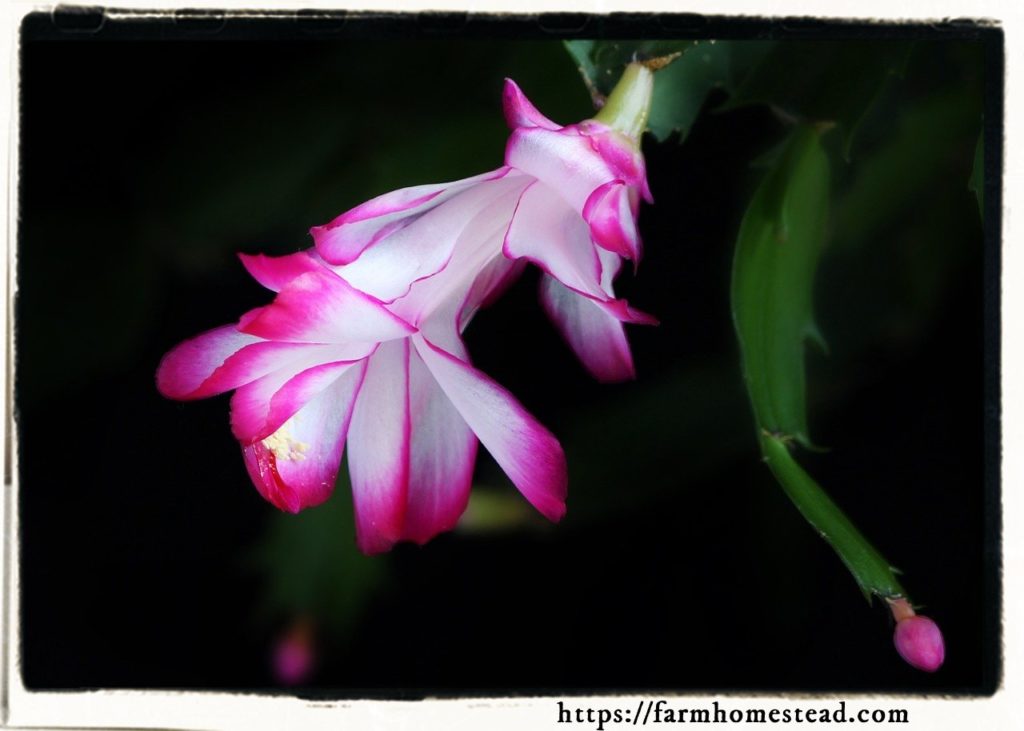Coaxing Christmas Cactus…
The common holiday cacti (Thanksgiving Cactus, Christmas Cactus, Easter Cactus) often refer to several closely related species in the genus Schlumbergera. Commonly cultivated, numerous cultivars have been produced ranging from red, pink, and peach to white and can appear in massive numbers on a single plant. They are originally forest cacti, growing as epiphytes at elevations between 3300 to 5600 feet (1000 and 1700 meters) above sea level in the Organ Mountains north of Rio de Janeiro in southeast Brazil, South America where they are called Flor de Maio (May Flower).
What steps should be taken to ensure a blooming Christmas Cactus this December?
The “trick” to getting Christmas cactus to bloom in the following years after purchase comes down to two things: light and temperature. These two are the keys city of indoor flowers. Christmas cacti produce flowers in a cool environment with a short day cycle. To coax the plant to start growing flower buds, there needs to be at least eight days of 16 hours of dark and eight hours of light on each day. Wherever you keep the plant, do not turn on the lights at night … even for a short period of time. That breaks the cycle of dark needed to push the plant into blooming. The temperature should be around 60 degrees. Avoid placing the plant where it receives either cold or hot air drafts.
It may sound complicated, but seriously, keeping your Christmas cactus in a cool room on the window sill and not turning on the lights is all that is really necessary. If the plant was in a lighted room prior to “setting the stage for blooming”, the side to the window will often develops flower buds, but side of the plant to the light plant does not. If the plant sets flower buds and then they fall off, it usually has to do with either receiving too much or not enough water or lack of air humidity. The good news is that Christmas cacti are considered relatively easy to get to bloom again if their temperature and light requirements are met.
- Stop fertilizing in the fall. In order to form buds, only water enough to keep the stems from shriveling.
- Do not re-pot the plant at this time. It is best to keep the plant a bit pot-bound. Move to a bigger pot in spring only when you haven’t re-potted in several years and/or the current year’s blooms were fewer in number than the previous year’s.
- If possible, let the potted cactus spend each summer in a shady spot outdoors. Leave it there until frost threatens – which in our area will often mean enough exposure to 50° to 55° F nighttime temperatures for the plant to start producing flower buds.
For indoor-only plants (or those that must come in before forming buds), put the potted cactus in an unused room, in a cardboard box or under a dark cloth, to ensure that it has 12 hours of complete dark for 25 consecutive nights. Day and night, keep it at temperatures between 59 and 69 degrees.
After bud formation, the cactus will need another nine to 10 weeks to complete their flower development and bloom, after which you can resume its normal feeding and watering.










